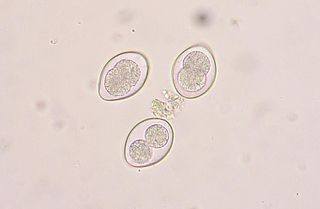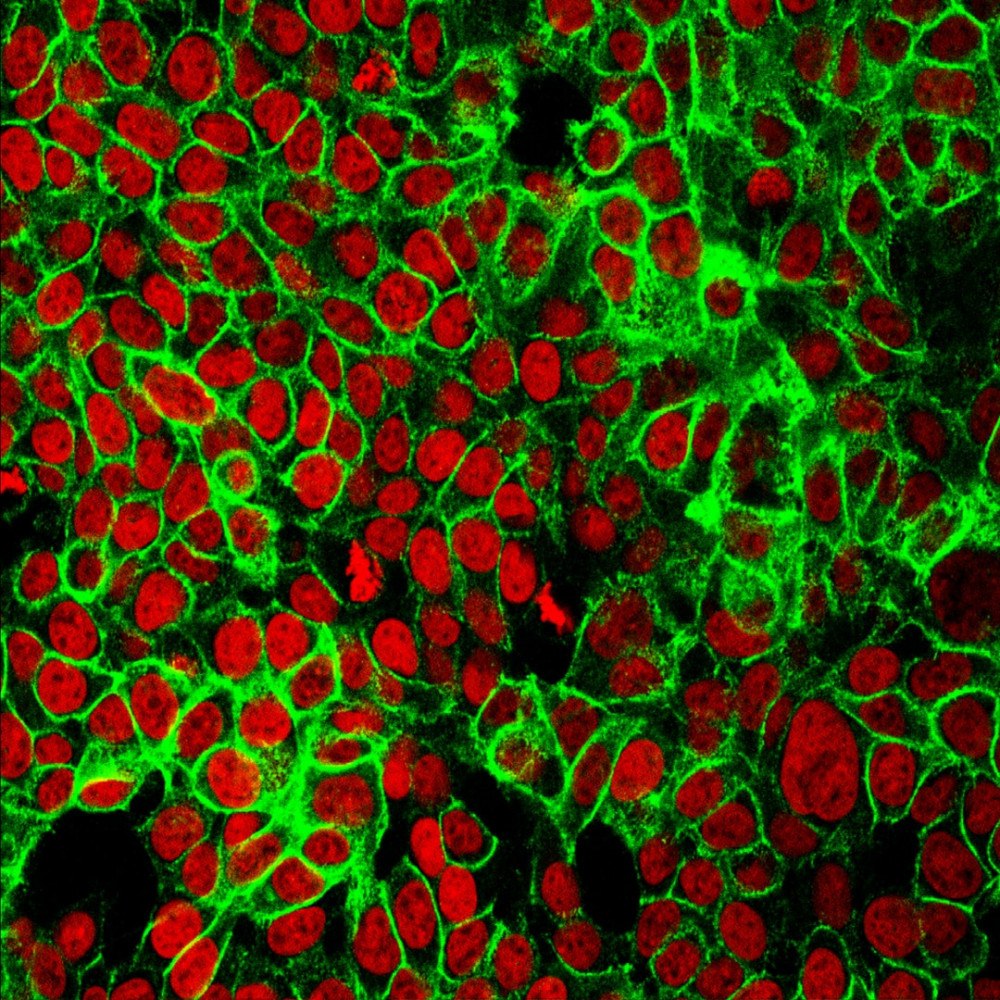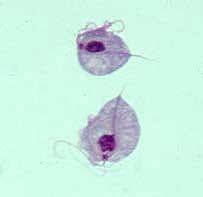 There are many types of internal parasites that cats can get and not all of them are worms. Protozoa parasites and cats infected by them are also common. Have you heard of coccidia? Giardia? Toxoplasmosis? These common parasites are all single-celled protozoan parasites that infect cats and other animals.
There are many types of internal parasites that cats can get and not all of them are worms. Protozoa parasites and cats infected by them are also common. Have you heard of coccidia? Giardia? Toxoplasmosis? These common parasites are all single-celled protozoan parasites that infect cats and other animals.
You won’t be able to see these parasites as you can sometimes see roundworms or tapeworms. Protozoa are microscopic single-celled animals, such as the well-known amoeba. However, we’re going to be discussing the parasitic protozoa that cats can be infected with.
Remember to keep in mind, most cats will have no obvious symptoms to parasites. Just because a cat doesn’t have diarrhea or other symptoms does not mean a cat doesn’t have parasites. Remember to take your cat into the vet if you suspect she has parasites.
Disclaimer: It is always best to take your cat into the vet as soon as you notice any changes to a cat’s poop. I am not a veterinarian and I cannot diagnose your cat. This post is for informational purposes only and is specially written for caretakers of feral cats, who may not be able to take the cats to a veterinarian.
Disclaimer: This post contains affiliate links. This simply means I earn a small commission from qualifying purchases at no cost to you. Read Affiliate Disclosure for more details. Thanks for supporting the kitties!

Coccidia
Coccidia (Isospora sp.) is a nasty protozoan parasite that causes coccidiosis in cats (and other animals). Nearly all cats become infected with Isospora felis (feline coccidia) at some point in their lives. The other species that infect cats is Isospora rivolta. Both of these species are also called Cystoisospora felis or Cystoisospora rivolta.
Most species of coccidia are species-specific. This means that if your cat is infected with coccidia, he or she cannot pass that infection onto you, your kids, or your dog. If your dog has coccidia, he or she cannot infect your cats or you.

Causes:
Cats contract coccidia by ingesting an oocyst, which is a thick-walled egg-like stage in the life cycle of coccidia. Ingestion occurs from contaminated fecal matter. This can occur with a fecal-contaminated environment or soil.
These oocysts can be infective within 6 hours of being excreted in feces. Or it can take a few days for these oocysts to become infective.
Cats may also become infected by eating flies or cockroaches or mice that carry coccidia oocysts. That means even solitary indoor-only cats can become infected with coccidia.
Symptoms:
- No symptoms
- Diarrhea: Mucusy, watery, or bloody
- Vomiting
- Decreased appetite
- Weight loss
- Dehydration
- Abdominal distress
- Hemorrhage
- Lethargy
- Depression
- Death
Coccidia infections usually cause no problems in adult cats but can cause serious illness in kittens. Coccidia can destroy the lining of the intestines and cause mucusy or watery diarrhea, which can be dangerous or even fatal in kittens.
Serious infections can occur because of overcrowding, such as in catteries and shelters. Good sanitation and hygiene help control coccidia infections.
Diagnosis relies on observing the microscopic cysts in cat feces. A clear fecal test does not indicate a cured infection as the shedding of cysts isn’t continuous. For the less common species of coccidia, a blood test might be performed.
Treatment:
- Sulfa-class antibiotics for 5-20 days prescribed by a veterinarian.
- Ponazuril is often prescribed in rescues or shelters for coccidia
- Fluids for severely dehydrated cats and kittens who have had chronic diarrhea.
Prevention:
Cats are easily infected from their environment, so it is important to practice good hygiene.
- Clean the litter box at least one time a day, though multiple times per day is better.
- Disinfect the litter box regularly with a high concentration of ammonia as coccidia oocysts are resistant to most disinfectants.
- Avoid overcrowding.
- Keep your pet cat indoors to prohibit predation as infected mice and insects will infect the cat
Oocysts do not become infective above 104 F or below 68 F. They become infective rapidly at 86-98 F. The oocysts are quite hardy and can survive for over a year in moist, protected environments as long as they aren’t exposed to freezing or extreme heat.
As for community cats and feral cats, there is no way to prevent infection as you cannot control their environment. Adult cats infected with coccidia usually have little to no symptoms and the infection will resolve on its own thanks to a cat’s immune system.

Giardia
Giardia (Giardia duodenalis) are one-celled organisms that cause giardiasis. These little protozoa move around with a whip-like ‘tail’ and infect the small intestine of cats and other animals. Giardia is found worldwide and is comprised of many types. Some infect a wide range of animals and some infect only specific species. Giardia is the common cause of ‘Traveler’s Diarrhea’ in people.
While rare, it is possible to contract Giardia from your cat.
This parasitic infection occurs in less than 5% of cats, according to Cornell University. Some environments can cause infection rates to be much higher, such as multi-cat homes and breeding catteries. Infection is greater in cats less than a year old.
Causes
Cats can get Giardia by ingesting the cysts in feces of another infected cat, either directly or indirectly. Cats can contract Giardia through the litter box, animal crates, and cages, rolling around in contaminated soil, or drinking contaminated water.
Cysts can persist in the environment for many weeks or even months. Humidity and overcrowding increase the survival of cysts in the environment.
Symptoms
- No symptoms
- Diarrhea
- Pale or greenish feces
- Mucusy or greasy feces
- Smelly feces
- Gas
- Abdominal discomfort
- Nausea
- Vomiting
- Weight loss
- Death
Diagnosis relies on fecal tests done at a veterinarian. Giardia may be underdiagnosed because the shedding of cysts can be inconsistent in feces.
Treatment
There is no FDA-approved treatment for cats with Giardia in the United States
- Fenbendazole for 5-10 days in dogs or off-label for cats may be used. The dosage is 23 mg per pound.
- Metronidazole may be prescribed by your veterinarian for 5 days.
Prevention
Practice good hygiene practices are a must.
- Clean litter boxes daily
- Regularly disinfect litter boxes with a bleach solution or other disinfectant
- Keep your cat indoors
- Avoid overcrowding
In community or feral cats, you cannot prevent Giardia.

Toxoplasmosis
Toxoplasmosa gondii is the single-celled organism that causes Toxoplasmosis. T. gondii’s definitive hosts are felines, both wild and domestic. That means that T. gondii requires cats and wild felines to complete its life cycle.
Despite popular rumors, domestic cats are not the only source of T. gondii. Mountain lions, jaguars, lions, cheetahs, and other wild feline species are also hosts to this parasite.
T. gondii is found worldwide.
Infection by T. gondii is actually very common for cats, but it very rarely causes disease. Kittens and immunosuppressed adult cats are susceptible to illness.
Cats usually develop an immunity to T. gondii after infection. This means that an infected cat only sheds oocysts in feces for a short period and only once after infection.
It is estimated that only 1% of cats are actively shedding oocysts in their feces.
Toxoplasmosis can also affect humans and other warm-blooded animals, including birds, livestock, and marine mammals. Humans contract T. gondii from eating tissue cysts found in raw or undercooked meat more often than from handling cat feces, though.
Most humans rarely get ill from Toxoplasmosis unless pregnant or immunocompromised.
Only approximately 11% of people in the US between the ages of 6 and 49 have contracted toxoplasmosis according to antibody studies, according to the Companion Animal Parasite Council. This is despite how common pet cats are in the US. Other countries, such as Turkey, have a higher prevalence.
Causes
Cats contract T. gondii by ingesting any of the 3 infective stages of this organism.
The most common way a cat becomes infected is by eating infected tissue cysts in prey or other raw meat.
T. gondii multiplies in the small intestine of cats and the oocysts (a thick-walled egg-like stage) are excreted in poo. These oocysts become infective in about 1-5 days. That means that poop sitting in your litter box can go on to infect other cats (or you) after a day or five.
This highlights the importance of daily litter box cleaning! Coccidia is not immediately infective (it can take 6 hours or a few days for coccidia oocysts to become infective), so scoop that box often, y’all! I recommend multiple times daily, especially if you have multiple cats.
Another important fact is T. gondii oocysts are VERY hardy. They can survive in the environment for well over a year! They are also resistant to disinfectants, although cleaning with scalding water is effective. But dangerous. Get disposable litter trays when introducing a new cat.
Kittens can be born with T. gondii infection because it can pass through the placenta.
Symptoms in Cats:
- No symptoms
- Fever
- Loss of appetite
- Weight loss
- Nausea
- Vomiting
- Diarrhea
- Lethargy
- Coughing
- Pneumonia
- Difficulty Breathing
- Jaundice
- Rapid or irregular heartbeats
- Swollen lymph nodes
- Lack of coordination
- Eye problems
- Blindness
- Abnormal pupil size
- Heightened sensitivity to touch
- Personality changes
- Circling
- Head pressing
- Ear twitching
- Difficulty chewing or swallowing food
- Seizures
- Loss of control of bowels and urination
- Death
Toxoplasmosis can also cause birth defects and fetal death.
The diagnosis relies on laboratory tests.
Treatment
There is no FDA-approved treatment for toxoplasmosis in cats or dogs.
- No treatment necessary with most infections
- Clindamycin (an antibiotic)
- Corticosteroids
- Anticonvulsants for cats experiencing seizures
- Fluids for dehydration due to vomiting or diarrhea
Prevention
- Good litter box hygiene, such as daily removal of feces
- Keep your cat indoors
- Prevent predation
- Never feed raw or undercooked meat or dairy
- If your cat has long hair around his butt, trim the area to avoid feces from sticking to the fur.
- Feed only commercially prepared cat food
For community cats, there is no prevention as they live outside and often eat their prey.
To prevent infection for you and your family:
- always cook your meat thoroughly
- scoop the litter box daily or more often
- wear gloves while gardening and wash hands immediately afterward
- wash your hands immediately after handling raw meat
- fruits and vegetables should be washed before eating
- do not consume raw or unpasteurized milk or milk products (including goat’s milk)
- do not eat raw oysters, clams or mussels
- keep outdoor sandboxes covered to prevent stray or feral cats from using it as a litter box
- boil water from streams or ponds when hiking or camping before drinking
- thoroughly disinfect cutting boards, knives, counters, etc. after handling raw meat
Handling your cat is perfectly safe and unlikely to infect you. Cats are excellent groomers and it is seriously unlikely that cats would leave feces on their fur for very long. Since oocysts become infective in feces after 1-5 days, the risk of infection from petting your cat is very low.
Read more about Toxoplasmosis here.

Other Single-Celled Parasites
There are a few other single-celled parasites that cats can get, but they are much rarer.
Amebiasis
Amebiasis is an infection caused by an amoeba, which is a type of protozoa. Amebiasis is caused by Entamoeba histolytica. This fun amoeba lives in the large intestines usually, but can infect other organs and even the genitals!
Causes
Amebiasis primarily affects humans as people are this amoeba’s natural host. However, sometimes cats, dogs, and other mammals can contract it after eating food or water contaminated by feces that contain E. histolytica cysts.
People can infect their pets if they have this illness and your pet drinks out of the toilet or other scenarios where your pet comes into contact with your poop.
This disease is more common in tropical and subtropical areas.
Symptoms
- No symptoms
- Persistent diarrhea
- Blood or mucus in the diarrhea
- Weight loss
- Anorexia
- Cramping and persistent need to empty bowels
- Death
These symptoms may be persistent or intermittent.
An examination of fecal matter is usually required to detect this infection, although sometimes diagnosis can be difficult. If that happens, colonoscopy and biopsy of ulcerations in the intestines may be required.
Treatment
- Antibiotics such as Metronidazole may be prescribed by your veterinarian.
Cryptosporidiosis
Cryptosporidiosis is another protozoan infection that is actually very common in cats, dogs, and even humans! Studies of cats for antibodies for this disease indicate that anywhere from 20%-50% of cats contract this illness, according to the Companion Animal Parasite Council.
It is believed that most species of Cryptosporidium are species-specific. That means that the cat type (Cryptosporidium felis) does not infect humans (or dogs) unless an individual is immunocompromised. And the human type does not infect cats, either.
Cryptosporidiosis is similar to coccidia in the infection behavior of these little parasites. It infects the small intestines and other organs.
Causes
Cryptosporidiosis is contracted by ingesting fecal matter that carries the oocysts (egg-like stage) of this little bug. This means cats (and humans) can contract this illness from fecal-contaminated environments, water, food, etc.
It is also very resistant to most disinfectants, including the chlorine in swimming pools and drinking water. They can survive in the environment for extended periods of time.
Cryptosporidium sp. ARE susceptible to commercial formulations of ammonia and temperatures of over 158 F.
Symptoms
- No symptoms
- Diarrhea
- Dehydration
Diagnosis can be difficult. It requires samples to be sent to specific laboratories.
Treatment
- No treatment as most cases will resolve on their own.
- Antibiotics such as Azithromycin or others may be prescribed by your veterinarian.
Cytauxzoonosis
Cytauxzoonosis is a life-threatening, tick-borne disease of cats that is caused by the protozoa Cytauzoon felis. It was discovered in the Mid-1970s in Missouri and its distribution has been expanding across the United States. The protozoa C. felis attacks blood cells.
This disease has a very high mortality rate and usually causes very serious disease that requires hospitalization.
Cause
Cats contract Cytauxzoonosis from the bite of a lone star tick (Amblyomma americanum). Because of that, the illness usually starts between March through September, which correlates to tick season.
Although the natural host for C. felis is the bobcat, apparently the domestic feline is close enough to get infected. Because the domestic cat is not the natural host, it is considered an aberrant host. Bobcats rarely fall ill from this disease, while domestic cats die or become deathly ill.
Symptoms
- Depression
- Lethargy
- Anorexia
- Anemia
- Fever
- Dehydration
- Jaundice
- Swollen lymph nodes
- Enlarged liver or spleen
- Hypothermia
- Difficulty breathing
- Vocal cries of pain
- Unable to get up
- Coma
- Death (within 2-3 days after temperature spike without treatment)
The diagnosis requires blood tests.
Treatment
When first observed, C. felis caused death in nearly 100% of the time in domestic felines. Since then, there have been rare reports of cats who survived without treatment, although it is not certain why.
- Atovaquone in combination with azithromycin
- Supportive care such as tube feeding, fluids, etc.
- Oxygen therapy
- Blood transfusions
- Anti-inflammatories for fever
Prevention
Routine application of flea and tick preventative, although transmission is still possible. The best way to keep your cat safe is to keep him or her indoors.
Trichomoniasis
 Trichomoniasis is a protozoan parasitic disease prevalent in cattle and cats. It is also a human venereal disease! There are many different species of this fun parasite, but the cat one is not sexually transmitted.
Trichomoniasis is a protozoan parasitic disease prevalent in cattle and cats. It is also a human venereal disease! There are many different species of this fun parasite, but the cat one is not sexually transmitted.
It inhabits the large intestine in cats and causes diarrhea. The full life cycle is unknown.
Causes
It is most likely caught by ingesting contaminated fecal matter. This can occur from the environment, sharing a litter box, etc.
Symptoms
- No symptoms
- Intermittent or chronic diarrhea
- Diarrhea with blood or mucus
- Swelling or redness of the anus
- Protrusion of the rectum through the anus in severe cases
Diagnosis is usually done with fecal tests.
Treatment
There is no FDA-approved treatment for this disease.
- No treatment
- Ronidazole or Metronidazole prescribed by a veterinarian is the usual treatment.
Prevention
- Limit overcrowding
- Frequent cleaning of the litter box
Non-US Parasitic Diseases
- Feline Babesiosis (Protozoal disease assumed to be caused by ticks): Mostly Africa
- Leishmaniosis (Protozoal disease transmitted by sandflies to dogs, usually, but occasional cats have been infected): Mostly outside the US in Central and South America, Africa, Middle East, Asia, and the Mediterranean.
EWW!
Please remember the only way to tell exactly what is causing a cat’s diarrhea is to take them into the vet.
Unfortunately, this might not be feasible with feral and community cats. Many of the protozoa infection are self-limiting or may clear up on their own. If regular deworming protocols have not stopped diarrhea issues, then it is time to call your veterinarian.
There are many issues that cause a cat’s poo to be soft or runny, and parasites are only a few of those causes.
Have you had a protozoan infection in your cat? Tell me your story below!
Lovies!

I didn’t know about any of these and it just emphasizes the importance of keeping your cat’s litter box clean, especially as many cannot be treated. It’s so important we as cat owners know what signs and symptoms to look out for even though as you said they don’t always present with any. Thank you so much for this great information.
My cat doesn’t use a little box he goes outside to use the bathroom, do you think its actually better for them to use a litter box so you can keep a better eye on them?
I’d really appreciate your view.
Amy
I do think it’s easier to keep an eye on their poo when they’re indoor-only and use a litter box. Unless you have multiple cats, of course, then you have to WATCH them go.
It is also not a great idea to have pet cats outside, parasite wise, because they have a much higher chance of contracting these little parasites than they do if they’re indoor-only.
Hello Rochelle,
I can relate to this article as I have 3 small dogs and only 1 of the dogs has a seemingly healthy poo. On the other hand, the other 2 dogs always seem to have a healthy poo in the beginning and usually ends up being a bit soft at the end. All of the dogs have nice shiny fur, which to me is an indication of good health. We do not feed them canned foods which I thing is a major contribution to overall good health.
Most of the parasites that you talk about are asymptomatic (no symptoms) and I am thinking 2 of my dogs might have one or more of these parasites. I will go to my vet and ask about these parasites.
In the meantime, appreciate this informative article and I will be doing some research on my own.
Thanks.
Jimmy.
Hi, Jimmy,
You’re right that if you suspect something is up, a veterinary visit is always in order. Especially as symptoms can be range from none to severe, so it’s definitely not something to self-diagnose. I hope your vet can tell you that you’re dogs are doing great!
OH! I should mention that canned food is actually better for your pet than dry food. It’s more nutritious for one thing, no matter what brand you buy, the wet food has better vitamins and minerals since it’s not processed liked dry food is. Dry food is cooked so much to dry it out that it loses a lot of nutrients. Another consideration is that it helps your pet stay hydrated. While this is usually more of a concern with cats, who have a low thirst drive, it’s definitely a bonus for dogs too, to have more moisture in their diets.
Again, I hope everything is okay with your dogs.
Cats often have more than I realized going on in those bodies that look so sleek and well-toned and can slink around a corner like a shadow. I thought the cat pictures were cute and didn’t plan to spend time reading about a critter I don’t have in my household right now. Alright, maybe the Barn Cat Lady thing caught my eye as well.
I really was not aware that cats had parasite so easily. We did always have barn cats, and they were not around in the house. Rarely came to the main house at all. The parasite, Toxoplasmosis sounded like it would be dangerous to the cat, according to the long list of symptoms you listed. Then, all you can do is normal healthy cat care, no medications for this parasite? I am not sure how knowing about a problem you can’t fix will affect me and cats in the future, I just know that I love to learn, and your article about the problems cats have was interesting, Thanks, Sami
Most of these parasites will self-resolve after some time, or become dormant. And USUALLY, they do not cause any concern for the cat. The problem happens with young kittens or immunocompromised cats because they get really, really sick.
The only treatment for these ailments is a vet as unfortunately, no over-the-counter product exists to treat any of these, except giardia. Toxoplasmosis is actually rarely treated in cats because usually, they become carriers and are asymptomatic. However, there are always treatments available. It’s just the FDA hasn’t approved as many for cats as for dogs, so a vet needs to prescribe them off-label to your cat.